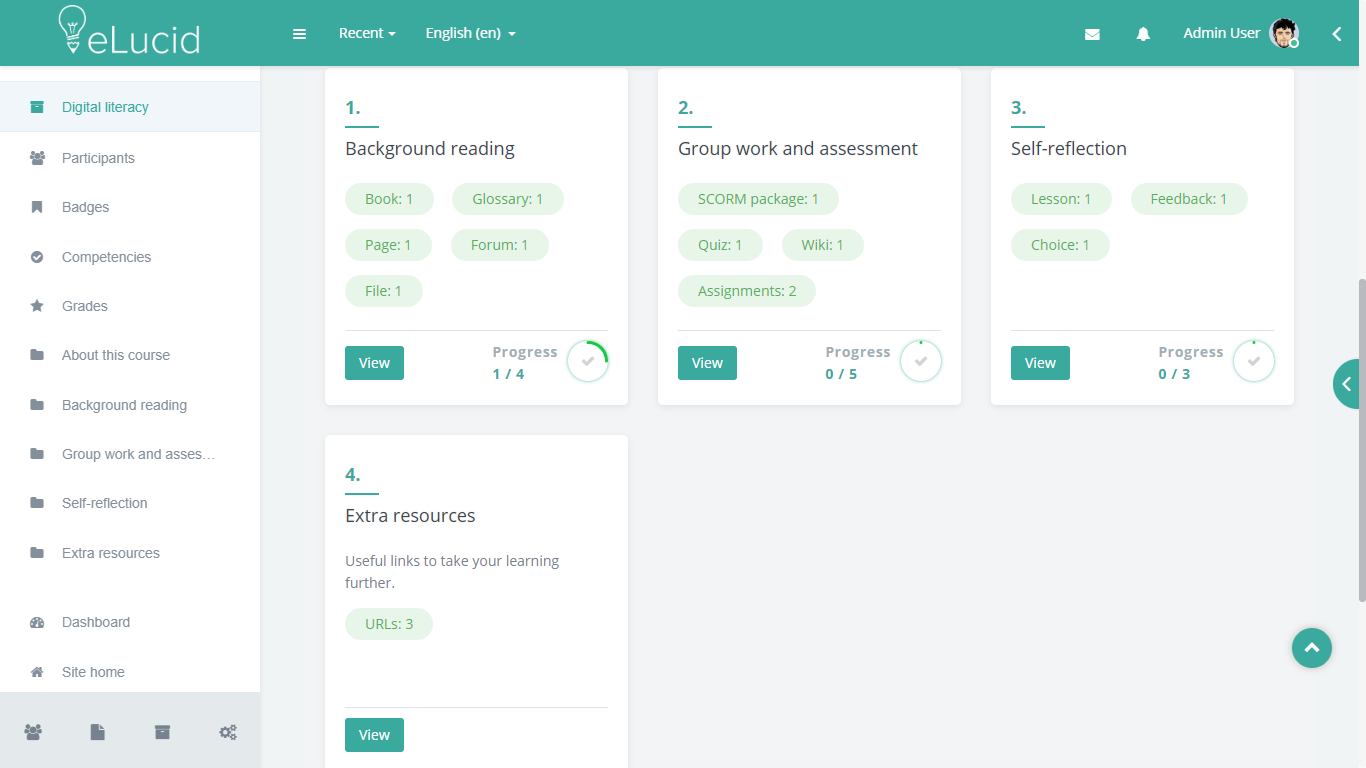“A good teacher can inspire hope, ignite the student’s imagination, and instill a love of learning.”
-Brad Henry
Implementing the above thought in a real classroom is easily achievable.
But inspiring and engaging students in an online learning environment is the real challenge.
This can be achieved with engaging content, collaborative tools, and other such elements that are found in the best of LMSes.
The definition of a good LMS can vary from person to person. But every good LMS must have a certain set of features. Let’s take a look at those
11 Features Every University LMS Must Have
1. Course Authoring Tools & Course Hierarchy

Content sits right at the base of your LMS.
Just like every strong structure has a solid foundation, your content should be well planned and worked on, to build further on it.
A good LMS should ideally have a proper hierarchical course structure, letting you create and manage courses easily and quickly.
Further, the LMS should have Easy-to-Use Course Authoring Tools that let you create varying types of content.
2. Easy User Interface and Experience
In a rapidly growing technological world, you need to be on your toes always.
Unsurprisingly then, an ideal LMS follows suit.
Your LMS should ensure Ease of Access, as well as an easy-to-use Interface.
Course Indexing, Minimalistic Design and Eye-pleasing color codes are just few of the ways you can simplify and improve your User’s learning experience.
3. Interactive & Game-based Learning
Nobody likes boring, and that’s a fact!
In a world full of distractions, there’s a high chance your students might lose interest in your courses.
The learning process can be made more interactive, engaging and productive by using as much multimedia content as possible.
A study has also revealed that the coming together of games and learning can effectively increase learning outcomes by two grade levels.
An ideal LMS for students should offer engaging content, including interactive presentations, videos, quizzes, games, and a lot more.
4. Gamification & Rewards
Gamification is the need of the hour when it comes to effective knowledge transfer and retention. And why not, especially when studies have proven reward-based learning to be beneficial to the learning process.
An Ideal LMS should let you gamify your course flow.
Gamification converts an existing course flow into a series of achievable milestones. Just like any other gaming experience, gamification encourages a competitive culture and spirit amongst the learners.
When students are rewarded with badges, certificates and other tokens of appreciation, they feel motivated to pursue further sections with even more enthusiasm and effort.
5. Collaborative & Social Learning
In the words of Helen Keller, “Alone we can do so little; together we can do so much.”
You might think that Learning is an individual activity, unaffected by anything else. However, according to the Social Learning Theory, People learn from one another by observation, imitation, and modeling. As a result, learning activities in a public setting that involve multiple people together leads to an increase in the retention levels and engagement of students.
Your students should be able to indulge in collaborative learning, wherever possible. Working on the same doc together, engaging in discussion forums and chats, attending video conferences, and so on, are just a few examples of collaborative learning. This can be achieved by inbuilt social & collaboration tools provided by the LMS itself.
6. Reporting & Analytics
What do you do, in case you or a mentor wants to keep track of how much time is being spent by a particular student on a module?
An ideal LMS should have an inbuilt capability of storing, processing and analyzing the data. The teacher should be able to study data like total time taken to complete the course, average marks obtained in a particular section/module, and so on.
For special reporting requirements, your LMS should offer compatibility with third-party data tracking software like Zoola and Intelliboard.
7. Blended Learning
An Ideal LMS should offer scope for ensuring Blended Learning. This essentially involves bringing traditional classroom learning and modern-day eLearning under the same roof.
 Tools that help you train and evaluate specific areas like soft skills, product knowledge etc are features found in the best of LMSes.
Tools that help you train and evaluate specific areas like soft skills, product knowledge etc are features found in the best of LMSes.
An example of the same could be the integration of a live video streaming tool. This would ensure your students get a classroom-like experience while going through the courses online.
In addition to the above, your students can also present their topic of study in a video recording. You can then evaluate their performance and offer time-based feedback, at various points of time.
Now THAT’S something, isn’t it!!
8. Learner Engagement Reports

As a teacher, you’re supposed to be on your toes always, when it comes to activity & progress tracking of each and every student.
If not tracked regularly, it might lead to increased numbers of fallouts and a drop in the performance levels of students.
Student Engagement reports are a foolproof way of keeping a tab on performance trends, ensuring minimal rates of fallouts and increased levels of student engagement.
Learners Engagement reports also help you get an insight into the quality and effectiveness of your course content, over time.
9. Consolidated Trainer Feedback
Being successful in what you do, is all about embracing your pluses, whilst learning from your mistakes.
A Consolidated feedback system in place does an LMS a lot of good.
With feedback for assignments, quizzes, and activities, a student can get an insight on the areas he needs to improve and work on. Facilities like the instructor-student messaging system also help students get individual guidance and attention.
Such a feedback system also helps students understand patterns in their performance across different courses.
10. Teacher Dashboard
A Teacher Dashboard helps you analyze and understand the progress of students while taking up courses. It also helps you organize their students and content effortlessly.
You can also track factors like the time since a student has last worked on his course. This helps to analyze and understand the overall engagement pattern of students.
The Teacher Dashboard also provides you an overview of courses in progress, assignments, and quizzes yet to be graded.
One-click buttons for frequently used tasks is a Dashboard feature that few good LMSes offer.
11. Push Feeds & Instant Notifications

An Ideal LMS lets you enable Instantaneous email notifications so that you can notify students of important updates.
This feature also lets you acknowledge them on course activity completion.
You can also regularly push Intranet content to your users, to share knowledge, updates, upcoming events, announcements, and a lot more.
Summing Up
The efficiency and effectiveness of any learning setup are primarily influenced by the course content and course delivery.
However, having a robust LMS opens up the scope of, and makes it easier for teachers to create well-structured engaging course material.









